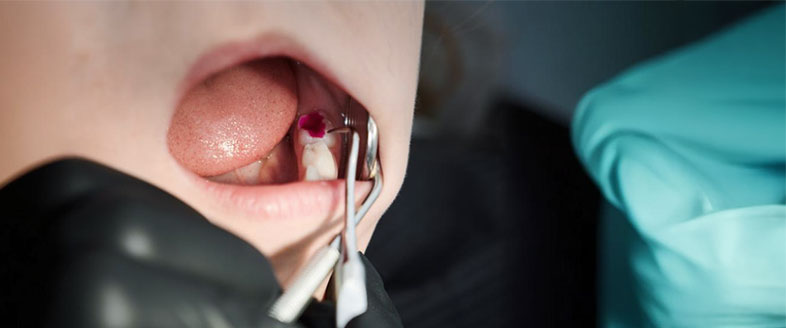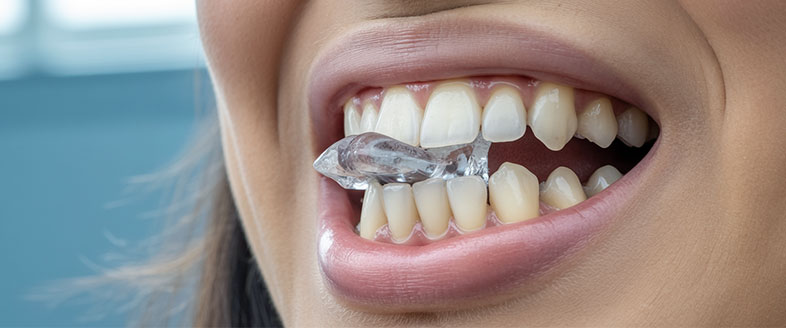A tooth filling is a common dental procedure that is used to repair a damaged tooth. During this process, a dentist removes decay and replaces the lost structure using a dental material. This removes weakened areas, and restores the function of a decayed, cracked, or broken tooth. With the help of a tooth filling procedure, patients can regain regular use of their tooth, and prevent further damage in their daily life.
Learn more about what a tooth filling is and how it works, so you can make a more informed decision about your dental care.
When Do I Need a Tooth Filling?

Common signs a patient might need a filling include:
These conditions can all be resolved through the use of tooth fillings, as they are evidence of irreparable damage to portions of the tooth. If you wait too long, and allow the damage to progress to late-stage tooth decay, a simple filling may no longer be sufficient. Extensive damage/decay may require more cohesive solutions, such as a root canal treatment or dental crown.
A trip to a dentist is the best way to preserve your teeth. dePacific is always here to help you understand your treatment options and find the best solution for your dental health.
How Does a Tooth Filling Help Me?

Once damage to the tooth is identified, a tooth filling is meant to reduce the risk of further decay and infection. The dental filling procedure closes off spaces where bacteria may enter, reducing the risk of further decay and infection. It preserves and stabilises the tooth's structure, and supports the remaining enamel. This helps to extend the life of a tooth that might otherwise require more extensive treatment.
A filled tooth regains strength and stability, making it possible to chew comfortably again. This is especially important for back teeth (molars), which handle much of the pressure during eating.
Fillings can also improve the appearance of a tooth. Composite resin and porcelain options are meant to match the natural tooth color, allowing for a more discrete repair. With these options, you can ensure that your smile looks the same as ever.
Tooth Filling Procedure

Before proceeding with a tooth filling, a dentist will need to carry out an oral examination. The dentist will inspect your tooth for damage, decay, and cavities, in order to determine whether fillings are required.
If there is a need for fillings, they then move on to the next steps:
- X-ray: The dentist carries out diagnostic imaging to locate the source of the decay and find out how deep the damage goes.
- Anaesthetic: Local anaesthesia is administered in order to numb the region and allow for pain-free treatment.
- Decay Removal: Next, the dentist uses specialised instruments to remove decayed portions of the tooth.
- Cleaning: The tooth cavity is prepared and cleaned thoroughly, in preparation for the filling.
- Material Filling: The dentist fills the cavity with a restorative material, then cures, shapes, and polishes it to achieve the desired shape of the tooth
- Testing: Once the filling is in place, the dentist performs a bite test to make sure that the patient is comfortable when chewing and closing their mouth.
The entire procedure typically takes 20 to 60 minutes, depending on the size and location of the cavity.
Aftercare
Immediately after your tooth filling is complete, you will likely experience increased sensitivity and mild discomfort. This makes it important to follow specific steps to support healing and protect the newly-filled tooth.
Do:
Don’t:
Apart from tooth sensitivity, patients may experience other side effects like grinding, that could lead to premature wear and tear of the filling. If you have any other enquiries or concerns, be sure to consult your dentist or schedule a follow-up appointment.
When/Why do Dental Fillings Fall Out?

While dental fillings are meant to be a long-term solution, they can still become loose or fall out over time. This is a common occurrence and does not always indicate improper dental care.
Common reasons include:
If a dental filling falls out, it is important for patients to get it replaced promptly to avoid further issues from exposure to bacteria or food particles.
Tooth Restoration by dePacific Dental Group

At dePacific Dental Group, we pride ourselves in being reliable, gentle, and caring dentists. We offer a professional experience in a comfortable environment, with dentists trained in various modern techniques. By using tooth-coloured materials, we carry out a tooth filling approach that is both subtle and functional. We ensure that the natural state of your teeth are preserved, and focus on helping patients restore their smiles.
For more information, contact dePacific Dental Group today, or click here to find the nearest clinic for your next appointment.

